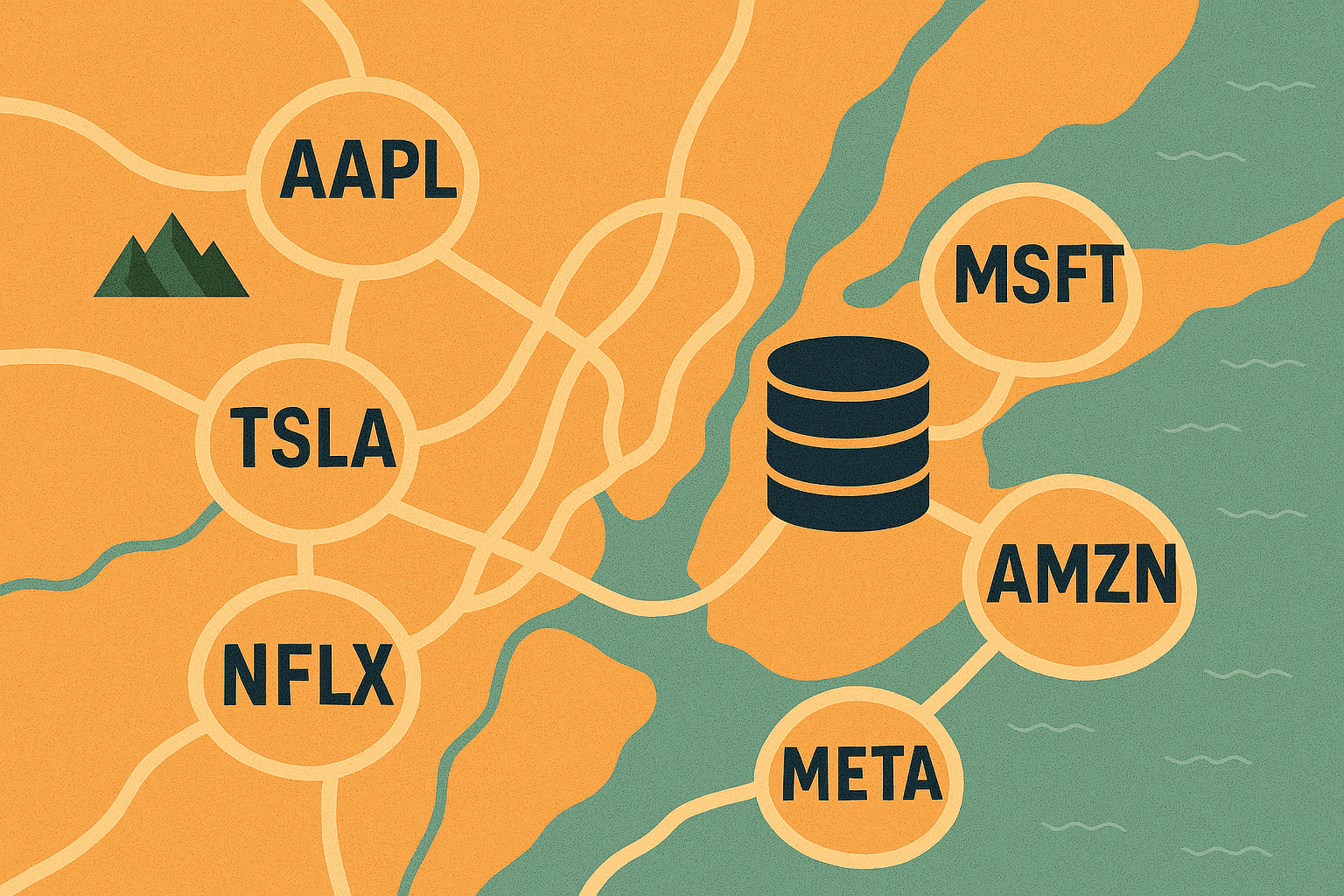Unlock the potential of Alternative Data for Credit Scoring to revolutionize financial inclusivity and accuracy in credit assessments. This cutting-edge approach leverages diverse data sources, from utility bill payments to gig economy earnings, offering a more complete picture of an individual’s creditworthiness. Dive into how these innovative practices enable financial institutions to better serve a broader audience, making credit more accessible and fair for everyone.
What is Alternative Data For Credit Scoring?
In the evolving landscape of financial services, are shifting to include a broader range of information, known as alternative data. This expansion bridges the gap to financial inclusion for those who may not have an extensive credit history, allowing for a more nuanced view of a borrower’s financial reliability.
This type of alternative data for credit scoring encompasses various non-traditional financial indicators such as rent payment histories, incomes from gig jobs, utility bill payments, and childcare expenses. Utilizing alternative credit data can enhance credit decision-making
The integration of alternative data into credit scoring represents a significant move towards more inclusive financial systems. It aims to provide a clearer picture of an individual’s potential credit risk by drawing on a diverse set of data points that do not appear in traditional credit reports.
Key Takeaways
- Alternative data provides a more complete profile of borrower creditworthiness.
- New credit scoring models with alternative data promote greater financial inclusion.
- Technological advancements enable deeper insights into credit risk analysis.
Fundamentals of Credit Scoring
Credit scoring is a critical tool in the financial industry, offering a statistical analysis of a person’s creditworthiness. Derived from a credit history, this score influences an individual’s ability to borrow and the terms of said borrowing.
Evolution from Traditional to Alternative Credit Scoring
Traditional credit scoring relies heavily on credit reports and history from major credit bureaus highlighted below. These models, including FICO scores, use past credit behavior to assess risk, resulting in a lagged view. However, alternative credit scoring methods have emerged to evaluate individuals with insufficient credit histories. Alternative data—like utility payments, rent, and non-traditional financial transactions—often gathered through technological means, plays a growing role in these new models, incorporating a broader spectrum of financial behaviors.
On a past webinar discussing alternative data for credit markets, Peter McGinnis, Director at Equifax Capital Markets, offered several key insights into the use of consumer credit data. He pointed out that although credit data is typically seen as a lagging indicator, alternative credit data could serve as a leading indicator, particularly through Equifax’s trade line data, which tracks consumer credit activities over time. Furthermore, he discussed other Equifax data assets like Utility and Telco Data, Employment Verification Data, and more. Notably, The Work Number database, which offers employment and income verifications updated each pay cycle, revealed an increasing number of individuals experiencing pay decreases, especially among those with credit scores above 680. These discussions underscore the evolving role and application of credit data in understanding and forecasting consumer financial behavior.
Alternative Data in Creditworthiness Assessment
In evaluating creditworthiness, alternative data offer additional insights that traditional credit data may miss, especially for those with a limited credit history.
Sudip Gupta, Associate Professor at John Hopkins University published research on this topic in a 2020 paper titled: Financial Inclusion and Alternate Credit Scoring: Role of Big Data and Machine Learning in Fintech. According to Gupta and colleagues, traditional credit scoring methods rely heavily on credit histories that many individuals, especially in developing countries, do not have. Gupta’s study reveals that data from everyday mobile phone usage can effectively predict loan defaults and serve as a robust substitute for traditional credit scores. This shift could democratize access to finance by enabling more people to prove their creditworthiness through digital footprints rather than conventional credit histories.
Gupta’s research highlights that mobile and social footprints are not just digital traces but powerful predictors of financial behavior. These footprints, when analyzed through sophisticated machine learning models such as Random Forest and XGBoost, have shown a higher predictive accuracy for loan defaults than some traditional credit evaluation methods. This insight is pivotal for fintech companies looking to innovate in the realm of credit scoring.
Types of Alternative Data For Credit Scoring
Alternative data in the context of credit scoring encompasses a range of financial and personal information not traditionally included in credit reports. This may include rental payments, utility bill payments, such as for mobile phones and cable TV, and bank account information like deposits and withdrawals, classed as consumer transaction data. It also extends to income data, employment history, education, and certain public records.
For more information on different alternative data categories available, visit our “What is Alternative Data?” resources.
Regulatory Considerations of Using Alternative Data
The use of alternative data in creditworthiness assessments needs to navigate regulatory frameworks, including those set by the Consumer Financial Protection Bureau (CFPB) and the stipulations of the Fair Credit Reporting Act (FCRA). The FCRA is particularly vital as it mandates the accuracy, fairness, and privacy of information in the credit reporting ecosystem. Providers of alternative data must ensure compliance with these regulations, avoiding the inclusion of full-file public records that could unfairly prejudice credit decisions.
Legal considerations for users of alternative data for credit applications are the same as equity use cases. Investors need to be aware of the key legal considerations of Material Non-Public Information (MNPI) and Personal Identifiable Information (PII). For investors looking at consumer credit, PII is particularly important. This workshop on PII looks at the legal considerations of Personal Identifiable Information and examines the importance of the California Consumer Privacy Act (CCPA). Our legal partners Schulte Roth and Zabel and other legal guests we invite to speak at our monthly workshops, always stress the importance of data provenance in particular.
Our library of legal articles is continuously updated with relevant alternative data considerations and important topics like CCPA in the US and the GDPR laws in Europe. We published an article in December on how Experian was forced to adjust how it handles personal data as they were found to be in breach of data protection laws. Another relevant article shows how the SEC is paying more attention to alternative data.
Technological Advancements in Credit Risk Analysis
Recent technological advancements have significantly reshaped credit risk analysis, enhancing both its accuracy and efficiency. Incorporating machine learning and automation, these innovations redefine the mechanisms and outcomes within risk management.
Role of Machine Learning
Machine learning has become integral in credit risk assessment. Financial institutions now rely on sophisticated machine learning techniques to create robust credit risk models. These algorithms analyze vast datasets, revealing patterns that traditional methods might overlook. For instance, researchers highlight the importance of using alternative data for more inclusive scoring models, which benefits groups traditionally underserved by credit facilities.
Automation and Efficiency Gains
Automation in credit risk analysis primarily contributes to efficiency gains. It streamlines the process, reducing the time required to evaluate risk and make lending decisions. The adoption of technology in this domain not only speeds up the process but also minimizes human error, ensuring a higher level of precision in credit scoring. Financial institutions that embrace automation report a more agile approach to risk management and a better alignment with evolving industry regulations.
Financial Inclusion and Consumer Behavior
Consumer behavior has been increasingly influential in the evolution of financial products designed to foster financial inclusion. Recognizing the changing landscape, a significant focus has been placed on developing financial products for thin-file consumers and leveraging alternative financial services to broaden their access to credit.
Financial Products for Thin-File Consumers
Thin-file consumers are individuals who have insufficient credit history to generate a traditional credit score, which typically prevents them from accessing mainstream financial products. Financial inclusion initiatives have led to the innovation of alternative credit data that encompasses factors like rent payment history and bank account balances. Experian Boost is a noteworthy example, which allows consumers to add telecom and utility payment data to their credit file to potentially increase their credit scores. Products such as “self” credit builder loans are emerging to assist consumers in establishing creditworthiness through monitored saving and repayment plans.
Influence of Alternative Financial Services
Alternative financial services, such as rent-to-own agreements, buy now pay later (BNPL) loans, and title loans, have begun to bridge the gap for underbanked consumers. Although these services have traditionally operated outside the purview of mainstream credit scoring, they provide valuable insights into spending patterns and financial responsibility. Consulting firms like Oliver Wyman highlight the predictive performance enhancements these types of alternative financial data could offer. Expanded FCRA Data may include analysis of consumers’ digital footprints to more accurately assess creditworthiness without prior credit history. This diverse data contributes to a more comprehensive view of an individual’s financial behavior, paving the way for more inclusive credit scoring practices.’





